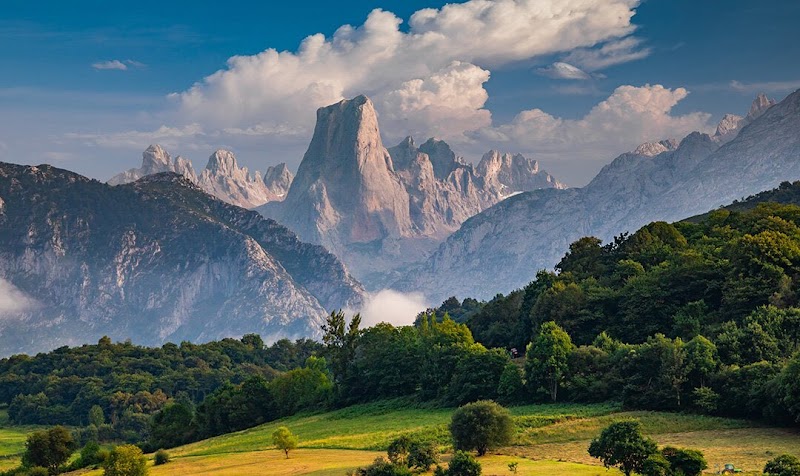
Fiestas de San Juan and San Pedro: León’s Vibrant Coastal Celebration
León's Fiestas de San Juan and San Pedro offer an unparalleled blend of fire, sea, and local tradition to mark the summer solstice. Experience ancient bonfire rituals, vibrant coastal seafood feasts, and a community celebration that invites you into its elemental rhythms.
Wear sturdy, grip-friendly shoes
The festival grounds near beaches and old stone paths can be uneven and slippery, especially around bonfire sites and coastal rocky areas. Footwear with good traction is essential.
Hydrate smartly
June heat by the ocean can be deceptive. Carry reusable water bottles and drink regularly even if cool sea breezes mask the sweat.
Arrive early for prime viewing spots
The bonfire ceremonies around San Juan attract crowds fast. Early arrival ensures a front-row seat to the fire jumping and music.
Bring layered clothing
Days can be warm but nights turn sharply cooler by the water. Prepare to adapt with lightweight layers for comfort throughout the festival.
Fiestas de San Juan and San Pedro: León’s Vibrant Coastal Celebration
Every summer, the coastal town of León bursts into life for the Fiestas de San Juan and San Pedro, a celebration that blends centuries-old tradition with the raw energy of ocean and fire. Taking place around June 23rd and 29th, these festivals mark the arrival of summer with rituals designed to engage all senses.
The air thickens with the scent of pine smoke and grilled seafood as locals and visitors gather near the water’s edge, where bonfires leap defiantly against the twilight. Here, the sea isn’t just a backdrop; it plays an active role, its waves daring you closer, pushing the night forward with a rhythmic pulse that you can’t ignore.
The festivities begin on San Juan’s eve with towering stacks of branches and driftwood erected for the bonfires. As darkness deepens, flamenco rhythms rise, drums beat, and the crowd moves closer to the flames. Jumping over the fires—a cleansing tradition meant to burn away bad luck—adds a physical challenge that invites visitors to engage directly with the elemental forces at play.
By San Pedro, the activities shift from fire to sea. Fishermen showcase their crafts, pulling fresh catches from boats still bobbing on restless waters. Food stalls arrange the best local produce, from octopus to anchovies, turning the festival into a feast of León’s coastal bounty.
Navigating these days means preparing for uneven, sometimes sandy terrain, where comfortable footwear and a strong grip are vital. Be ready for temperamental weather: warm sun filtered by brisk sea breezes, occasional spurts of humidity, and the risk of sharp temperature drops post-sunset.
Practical advice: arrive early to secure your spot near key viewpoints of the bonfires, carry reusable water bottles (hydration remains key despite the cool ocean air), and pack layers to balance the heat of daytime festivities with the cooling night. Respect the fire zones and natural surroundings to help keep the tradition alive and safe.
Experiencing Fiestas de San Juan and San Pedro in León isn’t only about observing; it’s a tactile engagement with tradition, nature, and community intensity. The festivals invite all adventurers—from casual cultural tourists to seasoned festival seekers—to interact with an environment fiercely itself: lively, unpredictable, and richly embodied.
Nearby Trips
All Adventures
Boat Charters
Water Activities
Adventures near León, Spain
Discover the unique and memorable adventures that make León, Spain special.
Frequently Asked Questions
What time do the Fiestas de San Juan and San Pedro begin each day?
San Juan’s evening festivities typically start around sunset, roughly 9:30 PM in late June, with bonfires igniting soon after. San Pedro events begin in the morning with fishing exhibitions and food markets, extending into late night.
Are the bonfire jumping rituals safe for all ages?
Jumping over the fires is a traditional cleansing act, but it’s recommended only for those physically confident and agile. Children and those uneasy near fire should observe rather than participate for safety.
Where is the best place to view the bonfires?
Views from the northeastern beach edges provide a clear, unobstructed outlook on the largest bonfires without the densest crowds. Arrive early to claim your spot!
Is seafood available for purchase throughout the festival?
Yes, local vendors and fishermen sell fresh-caught seafood all festival long, making it an excellent opportunity to sample León’s coastal culinary heritage.
What wildlife might be spotted during the festivals?
Look for coastal birds like seagulls and herons frequented near the shore. Occasionally, local fishermen report sightings of dolphins feeding offshore.
Are there any environmental efforts related to the festival?
Organizers encourage recycling and limiting single-use plastics. Firewood is sourced sustainably, and participants are urged to respect natural habitats, keeping the coast clean.
Recommended Gear
Supportive hiking shoes
Needed for safe walking on a mix of beach sand, rocky paths, and urban cobbles during festival events.
Layered clothing
Day-to-night temperature shifts near the coast require light layers to stay comfortable.
Reusable water bottle
Staying hydrated is key, especially before, during, and after the bonfire events in warm weather.
Small backpack
Useful to carry essentials like water, snacks, and extra clothing without hindering movement in crowded festival areas.
Local Insights
Hidden Gems
- "The small rocky cove east of the main bonfire beach offers quieter reflections and stunning views of the festival’s firelight from a distance."
- "Nearby forest trails are sprinkled with wild orchids in early summer before festival crowds arrive."
Wildlife
- "Common coastal birds such as oystercatchers and sandpipers patrol the waters’ edge during daytime."
- "Dolphins occasionally dart nearshore, adding a thrilling but elusive element to the sea-side experience."
History
"These festivals date back to medieval times and incorporate pagan solstice rituals embraced and transformed by Christian tradition. Their endurance highlights the community’s bond with both fire and sea elements."
